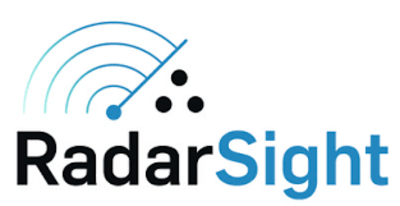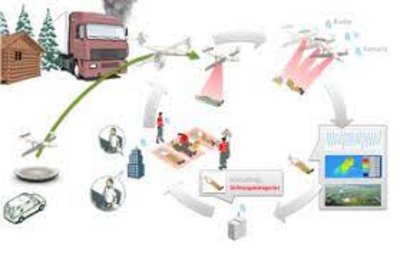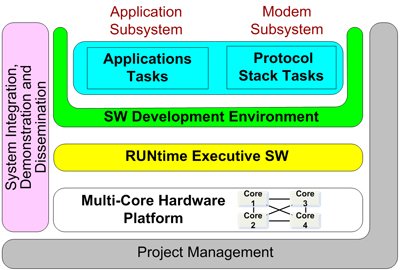SeeYOU

SENSORSYSTEM ZUR SICHEREN ERKENNUNG VON FUSSGÄNGERN UND RADFAHRERN IM AUTONOMEN FAHRZEUGVERKEHR
Eine entscheidende Herausforderung zur erfolgreichen Einführung des autonomen Fahrens in den Straßenverkehr ist die sichere Erkennung von Fußgängern und Radfahrern. Heutige, von Fahrrädern bekannte optisch wirkende passive Reflektoren sind nutzlos bei Tageslicht, versagen bei Nebel und ändern das Kleidungsdesign. Aktive Warnsender benötigen hingegen schwer in Kleidung zu integrierende Batterien, die auch vollständig ausfallen können.
Zentrales Ziel von SeeYOU ist daher die Entwicklung eines auf passiven und damit batterielosen Reflektoren basierenden neuartigen RADAR-Systems (RAdio Detection And Ranging), welches Fußgänger und Fahrradfahrer durch autonome Fahrzeuge zuverlässig erkennt und voneinander und auch von sonstigen Objekten bzw. Hindernissen sicher unterscheidet.

Partner
ID4us GmbH, Ruhr-Universität Bochum (Lehrstuhl für Integrierte Systeme), Universität Duisburg-Essen (Fachgebiet Nanostrukturtechnik)
Fördergeber
BMBF VDI VDE-IT
Webseite
https://www.elektronikforschung.de/projekte/seeyou
Ansprechpartner
Tobias Braun, Jan Schöpfel
RadarSight
Website des Projekts: https://radarsight.nrw
Die Orientierung in unbekannten Umgebungen stellt nach wie vor eine große Herausforderung für Blinde und Sehbehinderte dar, vor allem dann, wenn diese Umgebungen variablen und dynamischen Einflüssen unterliegen und sich täglich ändern können. Dies schränkt nicht nur die Mobilität, sondern auch die Selbstständigkeit der Betroffenen signifikant ein. Verfügbare Hilfsmittel, wie der bewährte Langstock, bieten zumeist nur eine eingeschränkte Erfassung der Umgebung. Vor allem Ziele auf Brust- oder Kopfhöhe können zu gefährlichen Situationen führen.
Ziel des Projektes RadarSight ist die Entwicklung eines neuartigen, auf Radartechnologie basierenden Hilfsmittels mit dem Namen the Torch. Das handgetragene Hilfsmittel soll es den Blinden und Sehbehinderten ermöglichen, ihre gesamte Umgebung präzise zu erfassen und mittels eines akustischen und haptischen Feedbacks wahrzunehmen. Das Hauptaugenmerk liegt auf einer möglichst intuitiven Verwendung und Interpretation der Umgebung. Durch verschiedene Betriebsmodi soll das System in fast allen Situationen Verwendung finden und dadurch den Alltag von Blinden und Sehbehinderten nachhaltig bereichern.


Fördergeber
EFRE.NRW START-UP Transfer.NRW
Ansprechpartner
Patrick Kwiatkowski, Alexander Orth, Marc Hamme
RehaToGo
Die qualitative und quantitative Beurteilung der menschlichen Motorik ist in der Medizin unerlässlich, um u.a. Pathologien zu erkennen, mögliche Therapien präzise zu planen, Hilfsmittel geeignet auszuwählen sowie den Gesundungsprozess effizient zu begleiten. Während in führenden Behandlungszentren die Ganganalyse als objektives Messinstrument zur Evaluation und klinischen Bewertung der Fortbewegung bereits erfolgreich eingesetzt wird, ist diese Technologie für die meisten stationären Einrichtungen und Praxen unerschwinglich und deren Einsatz bislang räumlich an ein entsprechend ausgestattetes Ganglabor gebunden. Verlässt der Patient eine Behandlungseinrichtung, wird er für den Behandler „unsichtbar“. Mit dem Projekt RehaToGo soll erstmalig ermöglicht werden, dass Patienten komplexe motorische Messmöglichkeiten ins häusliche Umfeld mitnehmen und sowohl im unmittelbaren Feedback als auch in telemedizinischer Rückkopplung mit den Behandlern ambulant Übungsbehandlungen durchführen.
In dem Projekt sollen völlig neue Technologie der Bewegungsmessung der Extremitäten mittels RFID -Funketiketten (sogenannte „Tags“) entwickelt und in die Alltagskleidungen integriert werden. Mittels miniaturisierter Lesegeräte können die Informationen aufgezeichnet und verarbeitet werden.
Partner
ID4us GmbH, Universität Duisburg-Essen, Fraunhofer FHR, Unyt GmbH & Co. KG, Heinrich-Heine Universität, Universitätsklinikum Essen, Universität Paderborn, Luttermann GmbH, Ruhr-Universität Bochum (Lehrstuhl für Integrierte Systeme)


Fördergeber
Leitmarktagentur Gesundheit.NRW
Ansprechpartner
Alexander Orth, Patrick Kwiatkowski
ASRA

ADAPTIVE REGELUNG VON STAHLBÄNDERN IN WARMWALZSTRASSEN AUF BASIS HOCHPRÄZISER RADARSIGNALVERARBEITUNGSVERFAHREN
Im Projektvorhaben ASRA soll erstmals ein Radarverfahren zur Kontourmessung der Bandkante im Vorgerüst einer Warmwalzstraße entwickelt werden. Hierfür wird ein hochauflösendes, modulares und vollintegriertes mehrkanaliges Radarsystem erforscht, welches eine adaptive Echtzeitregelung der Walzen ermöglicht.
Partner
IMS Messsysteme GmbH, Fraunhofer FHR, SMS Group GmbH, Ruhr-Universität Bochum (Lehrstuhl für Integrierte Systeme), IMST GmbH


Fördergeber
Leitmarktagentur Produktion.NRW
Webseite
https://www.fhr.fraunhofer.de/de/geschaeftsfelder/produktion/asra-adaptive-radarsignalverarbeitungsverfahren.html
Ansprechpartner
Hakan Papurcu, Justin Romstadt
DAST
DAST: DIGITALES ABBILD DES STERILGUTKREISLAUFS MITTELS TRANSPONDERTECHNIK
Sterilgüter wie OP-Besteck sind ein wichtiges Werkzeug im Krankenhausalltag. Vor ihrem Einsatz bei einer Operation werden die Sterilgüter passend zur OP sortiert und in metallischen Sieben in den Operationsraum transportiert. Aufgrund der großen Anzahl von eingesetzten Sterilgütern ist der logistische Aufwand beträchtlich.
Um eine präzise Nachverfolgung der eingesetzten Sterilgüter zu ermöglichen, wird im Projekt DAST ein RFID-basiertes Informationssystem entwickelt, das es ermöglicht jedes individuelle Sterilgut nachzuverfolgen, sowie die korrekte Bestückung der Siebe zu gewährleisten. Der Lehrstuhl für Integrierte Systeme entwickelt dabei einen Transponderchip, der an jedem einzelnen Sterilgut aufgebracht wird und dieses so mit einer elektronisch lesbaren ID ausstattet.
Eine besondere Herausforderung ist dabei die Reflexion durch die vielen metallischen Gegenstände (OP-Besteck, Siebe) in der Umgebung des Transponderchips. Um trotz der Reflexionen ein zuverlässiges Auslesen der Transponderchips zu gewährleisten, wird in DAST der bisher nicht genutzte Frequenzbereich im 5,8 GHz Band genutzt.
Partner
Smartrac Specialty GmbH, ID4us GmbH, Fraunhofer IMS, Ruhr-Universität Bochum (Lehrstuhl für Integrierte Systeme), IT4process GmbH, Helios Universitätsklinikum Wuppertal, Universitätsklinikum Köln, Universitätsklinikum Essen


Fördergeber
Leitmarktagentur Gesundheit.NRW
Ansprechpartner
Dominic Funke
FALKE
FLUGSYSTEM-ASSISTIERTE LEITUNG KOMPLEXER EINSATZLAGEN
Die Vision des Projekts ist eine teilautomatisierte Sichtung von Patienten im Fall eines Massenanfalls von Verletzten (MANV) mittels kontaktloser Detektion der Vitalparameter anhand verschiedener Sensoren, die an einem unbemannten Flugsystem installiert sind. Die individuellen Sichtungsergebnisse der Patienten werden dann an einen telemedizinisch angebundenen Leitenden Notarzt weitergeleitet, der die Beurteilung der Ergebnisse vornimmt. Damit wird die zügige Sichtung und Priorisierung der notwendigen Versorgung, in puncto Behandlung und Transport in Krankenhäuser, unterstützt. Der Lehrstuhl bringt in dieses Projekt seine Expertise im Bereich der kontaktlosen Vitalparameterdetektion mittels Radar ein.
Partner
Docs in Clouds GmbH, flyXdrive GmbH, IMST GmbH, RWTH Aachen University (Lehrstuhl für Anästhesiologie, Institut für Flugsystemdynamik), Ruhr-Universität Bochum (Lehrstuhl für Integrierte Systeme)


Fördergeber
KMU-innovativ
Webseite
https://projekt-falke.org/
Ansprechpartner
Jan Siska
HYPATIA
HYBRID PACKAGING TECHNOLOGY FOR INNOVATIVE 300 GHZ RADAR APPLICATIONS
The project HYPATIA aims at providing a robust electronic hetero-integrated high frequency technology with a wide range for industrial applications suited for the mass market. The core of the project lies in connecting the advantages of the substrate technology BiCMOS and mHEMT to realise an industrial-suited basis for high frequency sensors. This is done based on a silicon chip which works with a large bandwidth in a frequency range of 300 GHz. Combined with an mHEMT circuit, the range qualitiy of the signal increase significantly through low-noise receiver circuits. They are will be provided to challenging applications in the industrial measuring technology.
Partners
SIKORA AG, Infineon Technologies AG, Fraunhofer IAF, Fraunhofer FHR, Ruhr-Universität Bochum (Chair for Integrated Systems), IMST GmbH

Funding
BMBF VDIVDE-IT
Website
http://www.elektronikforschung.de/projekte/hypatia
TARANTO
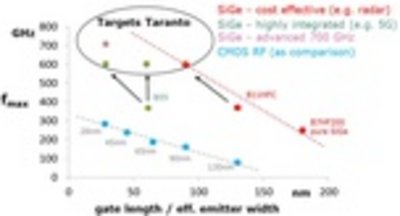
TOWARDS ADVANCED BICMOS NANOTECHNOLOGY PLATFORMS FOR RF TO THZ APPLICATIONS
It is TARANTO's goal to further expand the leading position of the European semiconductor industry in the SiGe BiCMOS technology and a solid industrial basis for the development of new products in the area of telecommunications as well as home and vehicle electronics. One of the main technical goals at TARANTO is to make the new performance level of SiGe HBT from earlier projects suitable for mass production. Another goal is to tailor the technologies to the scope mentioned above. For this, TARANTO's partners will establish new characterisation methods for frequencies up to a few hundred GHz on the decive and circuit level. Additionally, the HBT compact model will be further developed to support future applications.
Partners
34 partners in total. Coordinator: ST Microelectronics S. A.; German partners: Infineon Technologies AG, Infineon Technologies Dresden GmbH, Innovations for High Performance (ihp GmbH), MICRAM Microelectronic GmbH, Alcatel-Lucent Deutschland AG, Ruhr-Universität Bochum (Chair for Integrated Systems), RWTH Aachen University, Technische Universität Dresden, Universität des Saarlandes, Universität Stuttgart, Karlsruher Institut für Technologie, Nokia Solutions and Networks GmbH&Co KG, Bergische Universität Wuppertal, Friedrich-Alexander-Universität Erlangen Nürnberg, Kathrein-Werke KG
radar4FAD
![[Translate to English:] (Foto:https://de.pngtree.com/free-backgrounds](/fileadmin/_processed_/4/b/csm_-Pngtree-smart_car_autopilot_scenes_the_926651_9c371c3b0b.jpg)
UNIVERSAL RADAR MODULES FOR FULLY AUTOMATED DRIVING
Autonomous driving, especially in the urban environment, is the future of the car industry. A future vision that will be the reality in just a few years and will have a positive impact on our lives. Ultimately, it comes down to one question: Will the German automotive and supply industry be able to drive this development and strengthen its global claim to technology and market leadership.
The project radar4FAD does its bit by securing the essential requirement for autonomous driving: the full robust envoronment recognition - always and under all boundary conditions. The radar system has to be permanently efficient, independent of the weather conditions, time of the day, traffic volume, and other influences. Over the course of the project, a flexible radar modular construction kit is to be built. The construction kit is to be cost efficient and thus suitable for large-scale production of all forms of radar applications in the area of highly automated driving. In the context of the project, the Chair of Integrated Systems researches integrate circuits for future radar modules selectively for extended modulation schemes like Orthogonal-Division Code Multiplex (OFDM) and fast Chirp Sequences (CS).
Partners
Ruhr-Universität Bochum (Chair for Integrated Systems), Infineon Technologies AG, Robert Bosch GmbH, Daimler AG, Karlsruhe Institute of Technology, Fraunhofer ENAS, Fraunhofer FHR, Innovations for High Performance (ihp), Universität Ulm, Chemnitzer Werkstoffmechanik GmbH, IMST GmbH

Funding
BMBF VDIVDE-IT
Website
http://www.elektronikforschung.de/projekte/radar4fad
Radarmeter-3D
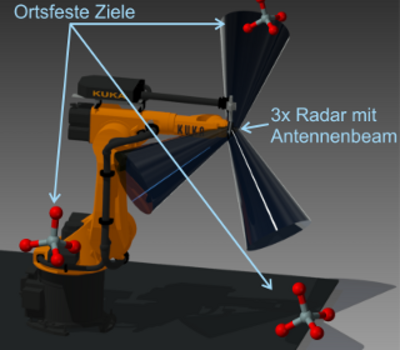
DEVELOPMENT OF A RADAR BASED SENSOR SYSTEM FOR AN ADAPTIVE COMPENSATION OF THE 3D POSITIONING ERROR OF INDUSTRIAL ROBOTS
It is the goal of the research project Radarmeter 3D to use industrial robots highly accurate while still being cost efficient. Industrial robots usually have a good relative positional accuracy. To accomplish a highly precise and absolute position accuracy, however, is a problem that has not been satisfactorily solved yet. Visual sensor methods for position control are sensitive to dust and moisture. Additionally, the sensors are either not precise, slow, and cheap, like camera based methods, or precise fast but also expensive, like laser based systems.
In the project, a multi radar sensor system for a highly precise and three dimensional positioning is researched. The measuring system will be equipped with at least three radar sensors, which will measure the three dimensional position of the roboter in the romm dependent of the stationary reference targets. Additionally, a coupling with an environment simulation gives a priori information for a digital signal processing and target rendition. . The sensor is then able to compensate angular errors on the basis of the current measures. Thanks to the radar positioning sensor, such a industrial robot can be flexibly used in many areas, e.g. to measure and ensure the quality of components in industrial processes or to navigate mobile roboters. The project has been successfully registered with LeitmarktAgenturNRW and is funded in equal parts by the state NRW and the EU.


Partners
IGA mbH, Krohne Innovation GmbH, IBG Robotronic GmbH, Ruhr-Universität Bochum (ESIT, EST, Chair for Integrated Systems), HÜBNER GmbH & Co. KG, Etalon AG, Wilhelm Schröder GmbH, ISRA VISION AG, LBBZ-NRW GmbH
Funding
Leitmarktagentur Produktion.NRW
RaVis-3D

DEVELOPMENT OF A NAVIGATIONAL AID FOR PEOPLE WITH VISUAL IMPAIRMENT
A navigation system for blind people and people with visual impairment was the goal of the research project RaVis-3D. With this new system. the user can perceive their environment acoustically - similar to the echolocation used by bats - so that even in foreign environment they can recognise how far away obstacles and walls are. The radar system scans the surroundings and converts the gained information into an acoustic sound pattern. Through this visualisation of their surroundings, the user is no longer dependent on the range of their white cane. RaVis 3D is a cooperation project within the European Funds for Regional Development. Besides the three chairs of electrical engineering of the Ruhr-University Bochum, several industrial partners are part of the funds. The project was successfully registered with LeitmarktAgenturNRW and is funded in equal parts by the state NRW and the EU.


Partners
Kampmann Hörsysteme GmbH, SNAP GmbH, Ruhr-Universität Bochum (ESIT, IKA, Integrated Systems), Dräger und Lienert Informationsmanagement GbR, Berufsförderungswerk Halle (Saale), GN Hearing GmbH
Funding
Leitmarktagentur LifeSciences.NRW
Website
http://ravis-3d.de/
eMuCo
ICT-eMuCo is a European project supported under the Seventh Framework Programme (7FP), which is coordinated by Ruhr-Universität-Bochum. The aim of the project is to develop a platform for future mobile devices based on multi-core architecture maintaining a high flexibility and scalability in the system. This comprises the relevant controller element as well as the operating system and application layers.
EASY-C
The aim of the research in EASY-C will be to develop key technologies for the next generation of cellular networks (LTE and beyond). Therein our institute explores suitable processor platforms for the second layer of the protocol stack (MAC, RLC and PDCP) with a focus on concepts and models for hardware acceleration.
EASY-A
The growing demand for wireless communication systems with transmission rates of multiple gigabits per second presents a great technological challenge. The only solution is to increase the spectral efficiency of the transmission method or to explore the frequencies in the millimeter range, which is not used for mobile communications as of yet. On a system level, the Chair of Integrated Systems researches the realisation of a highly integrated 60 GHz communications system in a cost-efficient silicon technology.
Impairments of Signal Integrity by RF
3GPP Long Term Evolution (LTE) is the successor of UMTS. Using higher order modulations and multiple antennas (MIMO) a datarate up to 200 Mbit/s is achieved. LTE is the first cellular standard using Orthogonal Frequency Division Multiple Access (OFDMA) which utilizes more efficiently the frequency spectrum. In the ISIRF-project the impact of analog components within the radio frontend on the signal integrity is investigated and suitable compensation methods are developed.
60-GHZWPAN
BEYOND GIGABIT WIRELESS SYSTEMS
The Wireless Personal Area Network (WPAN) is the short distance pendant of the popular wireless local area network (WLAN). A broadband communication system at 60GHz provides the capability to realize thousand fold higher data rates compared to WLAN. Thus, uncompressed video streams can be transmitted wireless from notebook to the video projector and a wired connection between (HD-) TV, DVD-player and Hi-Fi system can be omitted. The 60-GHz-WPAN-Project targets the design of analog RF building blocks and a receive chain in a 65 nm digital CMOS technology. More
Location based Services (LBS) integrated in IP Multimedia Subsystem (IMS)
Location-based services (LBS) are a key pervasive computing application that could deeply influence the way people use their mobile devices. Recent advances in mobile phones, GPS, and wireless networking infrastructures are making it possible to implement and operate large-scale LBS. In enabling LBS applications to interoperate with the Internet, using IP Multimedia Subsystem (IMS) which supports all the existing industrial standards (e.g., GSM, UMTS, GPS, AGPS), promises carriers and subscribers alike a suite of new location services. The integration of advanced LBS in IMS and the possible application of these services are suggested in this project.
Saw-less Frontend
In this project, research concerning the receive path in mobile communications is conducted. The challenge here lies especially to exchange the external steep SAW filters with electrical filters in the entry of the receive path. The electrical filter is especially low-noise and linear.
Radar on Chip for Cars (ROCC)
The increasing traffic volume in the streets leads to a demand for new safety concepts in the motoring technology. According to studies dealing with automobile radar systems, about 88% of all collisions are affected positively by these systems. The project aims at realising cost-effective radar systems on highly integrated silicon chips for the next generation of automobile radar systems at 76-81 GHz. The Chair of Integrated Systems researches and develops integrated circuit components for the analog front end of these radar systems.

